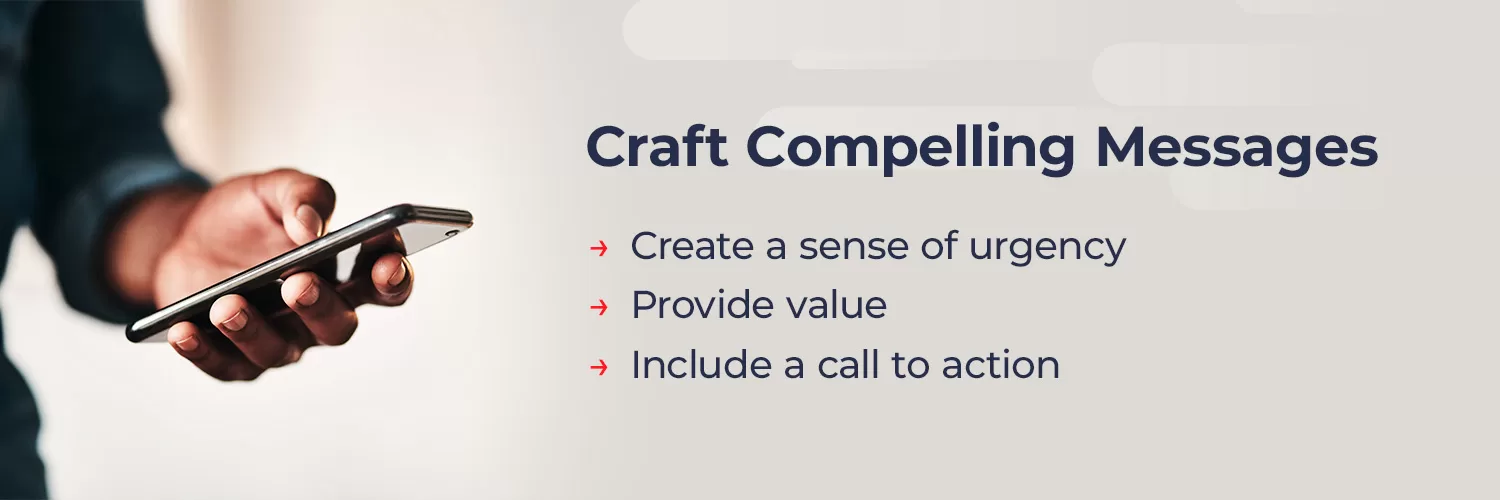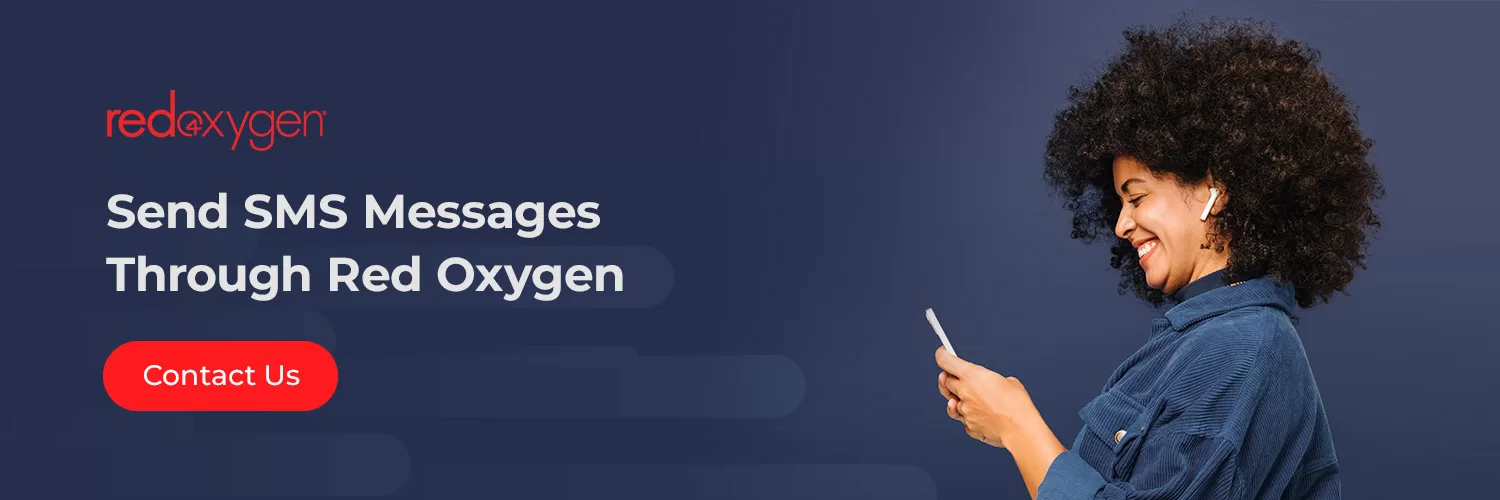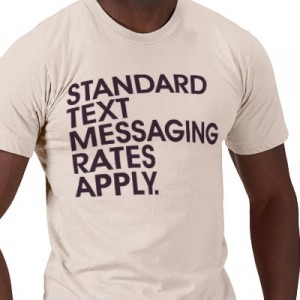
Strengthening communication with your customers is critical to your business’s continued success, and with the rise of technology comes new ways to enhance interactions. This SMS guide for beginners will explore best practices for using SMS to improve internal communication and develop better customer relationships.
The Role of SMS In Business Communication
SMS communications are a form of text messaging that businesses use to connect with groups of contacts, such as customers, members of their organization or volunteers. This method relies on opt-in communication, meaning that the contact needs to sign up and agree to receive the messages. In addition, if they feel no longer interested in receiving messages from your business, they need to be able to opt out of the messages seamlessly.
How successful can SMS communication be? Studies show that SMS messages have a 98% open rate, making them the highest of any channel. This high engagement means that businesses can use SMS to enhance internal communication, provide updates and improve customer interactions, ultimately leading to better experiences and increased efficiency.
How to Use SMS
Businesses can use SMS to accomplish several goals:
- Enhance customer service: Companies often use SMS messages to improve their customer services, such as sending order confirmations and delivery update notifications.
- Gather feedback: SMS can be used to collect feedback from customers after an interaction. A simple text asking for their feedback can help businesses improve their overall services and address any challenges.
- Send reminders: Scheduling SMS reminders can decrease customers’ late payments and missed appointments.
4-Step SMS Guide for Beginners
Now that you understand how valuable SMS messages can be for enhancing communication within your business, it is time to craft your texts. Here are four basic steps for leveraging SMS.
1. Choose an SMS Services Provider
An SMS Services provider is a partner that helps businesses send text messages to their employees and customers.
For example, Red Oxygen allows you to seamlessly contact lists, personalize bulk SMS messages, and send your messages seamlessly. Selecting the right provider will give you the tools and services to create, send and manage your SMS communications effectively.
2. Create a Contact List
Your contact list will contain the names and phone numbers of the individuals you want to message. If you’re just starting, there are a few key strategies to build your contact list:
- Through opt-in forms: Create sign-up forms on your social media and website pages where visitors can voluntarily provide their phone numbers to join your SMS list.
- During events and promotions: When hosting an event, you can gather numbers by setting up a booth where attendees can subscribe to your messages.
- At in-store sign-ups: If you have a brick-and-mortar store, you can invite customers who physically visit your store to join your contact list.
3. Craft Compelling Messages
A compelling message will help you connect with your audience and make a lasting impression. Here are a few tips for creating impactful SMS:
- Use personalization (for example, using their first name) to create a connection.
- Provide value with helpful content that addresses your audience’s needs.
- Be concise regarding how your business can assist them.
- Maintain a consistent tone that will resonate with your audience and make you memorable.
- Include a call to action with each message to encourage desired responses.
4. Measure Effectiveness
Once you have established your SMS communication, measuring its effectiveness is essential. Develop relevant metrics and track them to assess success. For example, you may want to monitor your delivery rates, response rates and engagement levels.
Keep analyzing your data. This will help you measure the true success of your efforts, and you can use these insights to refine your future communications.
SMS Best Practices
SMS campaigns can be a powerful form of communicating with customers and clients, if run correctly. Consider these SMS best practices as you plan campaigns for your business to give your texts the best chance at success:
1. Ensure SMS Campaign Compliance
Depending on where your business is located, you may be subject to different organizational and governmental compliance rules regarding your customers’ privacy and rights. For example, the U.S. governing body of the Federal Communications Commission (FCC) has authority under the Telephone Consumer Protection Act of 1991 to ensure marketers follow guidelines for calls and SMS messages. Along with regulations and fees from U.S. mobile carriers requiring companies and messages sent over their networks to be registered with The Campaign Registry (TCR). And, other countries like Australia have governance by the Spam Act 2003 (Spam Act) and the Spam Regulations 2021.
2. Identify Yourself
It’s important to identify your business as the sender of each text message. Including your company’s recognizable name in a text makes the recipient more likely to open and engage with the message. Identifying your company or organization in every SMS message can also help keep your messages from being blocked by carriers.
3. Use Personalization
Whether you want to send a few texts to a couple of recipients or hundreds of SMS messages at once, including personal (but not confidential) information about the recipients can result in higher open rates. When recipients see their name, order number or the date of their last appointment in a text, they are more likely to engage with it. A carrier network may also be less likely to flag and block your messages if they include personalized information.
4. Send Timely Messages
Few people want to receive text messages at three o’clock in the morning. It’s crucial to understand that timing is everything in SMS messaging, so research your customers’ needs and schedules to send messages when they’re most likely to read them.
5. Think Quality Over Quantity
Most customers don’t want to be bombarded with multiple long SMS messages from your company every day or week. When it comes to SMS campaigns, quality is better than quantity. Keep messages short and to the point, and send them strategically to avoid overburdening your contact list.
6. Include Opt-Out Instructions
To prevent recipients from blocking your number and maintain a trustworthy image with customers, make opting out of your SMS messages as easy as possible. Include a phrase like “Text STOP to opt-out” in your texts, so customers know exactly how to stop receiving messages.
Send SMS Messages Through Red Oxygen
When your business wants to connect and strengthen relationships with its customers, employees and volunteers, SMS messaging is a great way to do it. By following best practices and compliance regulations, your company or organization can effectively engage with your intended recipients and deliver a seamless customer experience.
With Red Oxygen, sending SMS campaigns is simple. Red Oxygen provides plenty of SMS features that simplify communication, like personalization, bulk texting, opt-out management and more. To explore Red Oxygen’s solutions, request a demo today.





























































